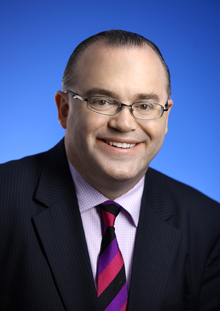Asenapine Is Found to Be Effective in Youth With Bipolar I Disorder
Abstract
Asenapine led to statistically significant improvements in scores on the Young-Mania Rating and Clinical Global Impression scales for use in bipolar illness from days 4 and 7 onward.
The second-generation antipsychotic asenapine may help to reduce mania and the severity of illness in youth with bipolar I disorder within days, according to a study published in the December issue of the Journal of the American Academy of Child and Adolescent Psychiatry.

Robert Findling, M.D., M.B.A., led one of the first studies assessing the effectiveness and safety of asenapine in children with pediatric bipolar I disorder and comorbid attention-deficit/hyperactivity disorder.
“Bipolar I disorder in children and adolescents is a serious and relatively prevalent condition,” said the study’s lead researcher, Robert Findling, M.D., M.B.A., director and Stulman Professor of Child and Adolescent Psychiatry at Johns Hopkins University School of Medicine, in an interview with Psychiatric News. Because adolescents with bipolar I disorder must often try a variety of antipsychotics before finding a medication that is effective and tolerable, Findling said that it is important to have multiple pharmacologic options to treat this condition in youth.
Asenapine was initially approved in 2009 as a monotherapy or adjunctive therapy (with either lithium or valproate) for the acute treatment of manic or mixed episodes associated with bipolar I disorder in adults, and for the acute and maintenance treatment of schizophrenia in adults.
To test the effectiveness of the medication in pediatric patients, Findling and colleagues randomly assigned 403 youth (aged 10 to 17) displaying manic or mixed episodes of bipolar I disorder to receive placebo or asenapine (2.5 mg, 5 mg, or 10 mg) twice daily for three weeks.
The researchers found that all three doses of asenapine led to statistically significant improvements in Young-Mania Rating Scale (YMRS) scores and Clinical Global Impression scale for use in Bipolar Illness (CGI-BP) from days 4 and 7 onward. By day 21, a positive drug response (greater than 50 percent reduction in YMRS scores from baseline) was achieved by 42 to 54 percent of those taking asenapine compared with 28 percent among youth taking placebo. There were no significant differences in YMRS total scores between the asenapine groups versus the placebo group in patients with and without attention-deficit/hyperactivity disorder, with and without concomitant stimulant use, or with respect to age and gender.
The incidence of weight gain at 21 days was statistically significant versus that of placebo in all three asenapine groups (asenapine ranging from 8.0 to 12.0 percent versus placebo at 1.1 percent). Mean changes from baseline in lipid parameters, glucose, and fasting insulin were also greater in patients treated with asenapine compared with those who took placebo. Other treatment-emergent adverse events reported by patients taking asenapine included somnolence, sedation, increased appetite, and numbness and tingling of the mouth.
“The data from this large multicenter study provide evidence that asenapine can be considered as an acute treatment for this patient population,” Findling told Psychiatric News. The unique pharmacological profile of asenapine—serving as an antagonist for serotonin, dopamine, noreadrenline, and histamine receptors—may explain the observed ability for the drug to improve symptoms associated with bipolar I disorder, according to Findling and colleagues.
As it relates to the adverse events associated with asenapine, the researchers pointed out that the results suggest the potential for substantial long-term metabolic changes in pediatric patients. They also noted that studies examining the safety and effectiveness of asenapine over a longer period of time are needed to confirm the current findings. The researchers added that because of the known metabolic side effects that occur in children and adolescents who are prescribed most atypical antipsychotics, “baseline and periodic monitoring of metabolic parameters including BMI, lipids, and glucose levels is recommended.”
According to Actavis Plc., the Food and Drug Administration in March approved its Supplemental New Drug Application for Saphris (asenapine) as a monotherapy for the acute treatment of manic or mixed episodes associated with bipolar I disorder in patients aged 10 to 17. The approval of the medication in youth was based in part on Findling and colleagues’ current findings.
The study was funded by Merck and Company Inc. ■



